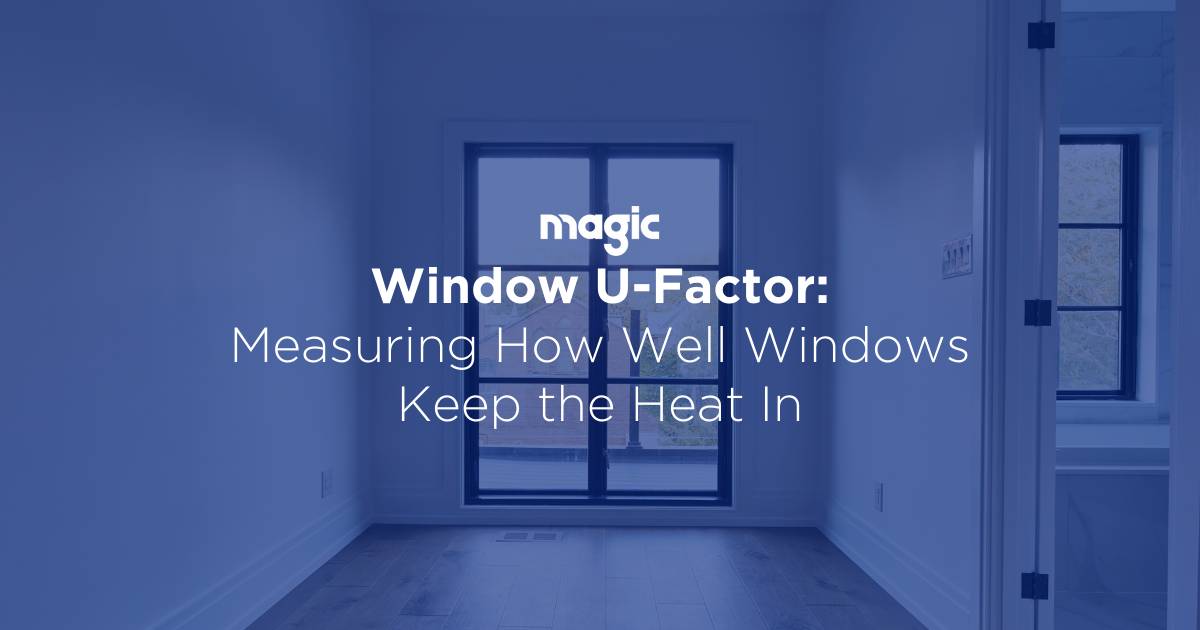Window U-Factor and Its Effect on Energy Efficiency
We talk about energy efficiency quite a lot on our blog, and for good reason! Investing in energy-efficient windows and doors can lead to reduced energy waste, lower utility bills, and more comfortable living conditions. They can also help you take advantage of certain government green energy rebates. Plus, the more you understand energy efficiency, the more discerning you can be as you shop for new windows. One of the most important metrics used to gauge the efficiency of a glass window unit is U-Factor. In this blog, we’ll cover what window U-factor is, why it’s important and the design elements that help to improve it.
Browse This Content:
- What is Window U-Factor?
- U-Factor is a Comparative Performance Rating
- What is a Good U-Factor?
- U-Factor and Insulation
- 5 Window Design Elements That Can Help Improve U-Factor
- Want to Learn More About Installing High-Performance Windows?
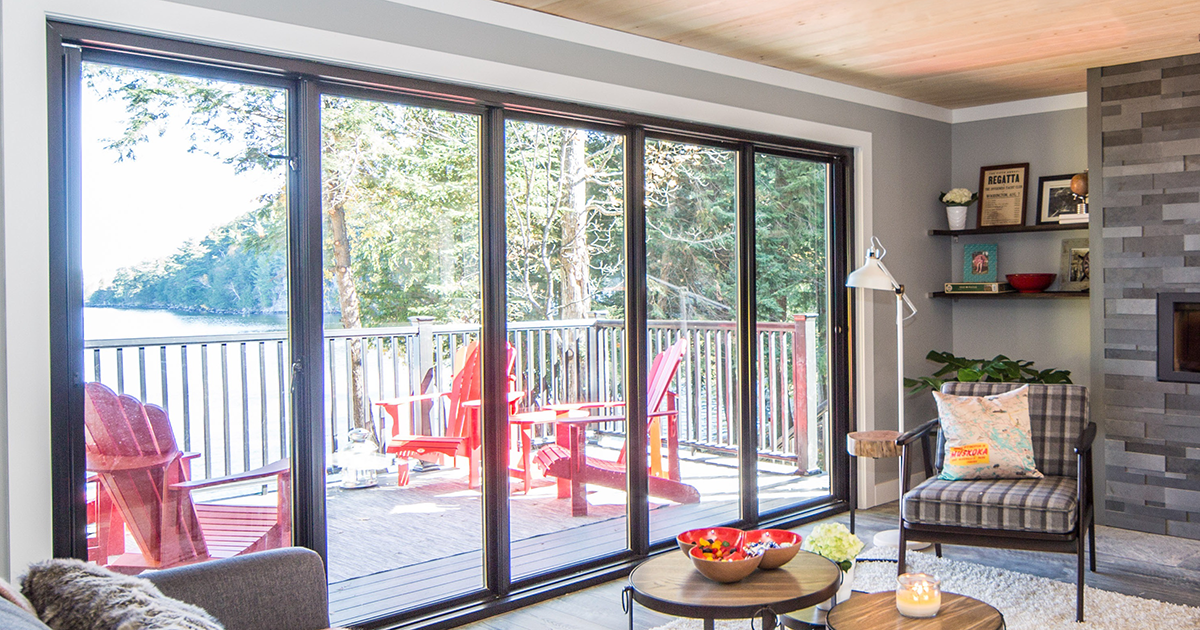
What is Window U-Factor?
U-Factor is a metric that determines how much heat escapes the home via a glass window or door unit. It’s a key indicator of how well a window unit prevents the loss of heat generated by objects inside the home (such as an HVAC unit). It’s also one of the most important metrics used by the broader fenestration industry to gauge energy efficiency.
U-Factor as a Comparative Performance Rating
U-Factor is one of the four main energy performance ratings used by the National Fenestration Rating Council (NFRC) — an independent, third-party organization providing objective testing and certifications for glass windows, doors, and skylights. Other organizations such as ENERGY STAR® use these NFRC metrics in their own product assessments. The four key metrics are:
- U-Factor
- Solar Heat Gain Coefficient
- Visible Transmittance
- Air Leakage
By using these consistent metrics, the NFRC makes it easier for homeowners to make smart decisions about their replacement windows. This is because all the windows they test are held to the same, consistent standards of performance.
Learn More About These Key Energy Efficiency Metrics Here >>
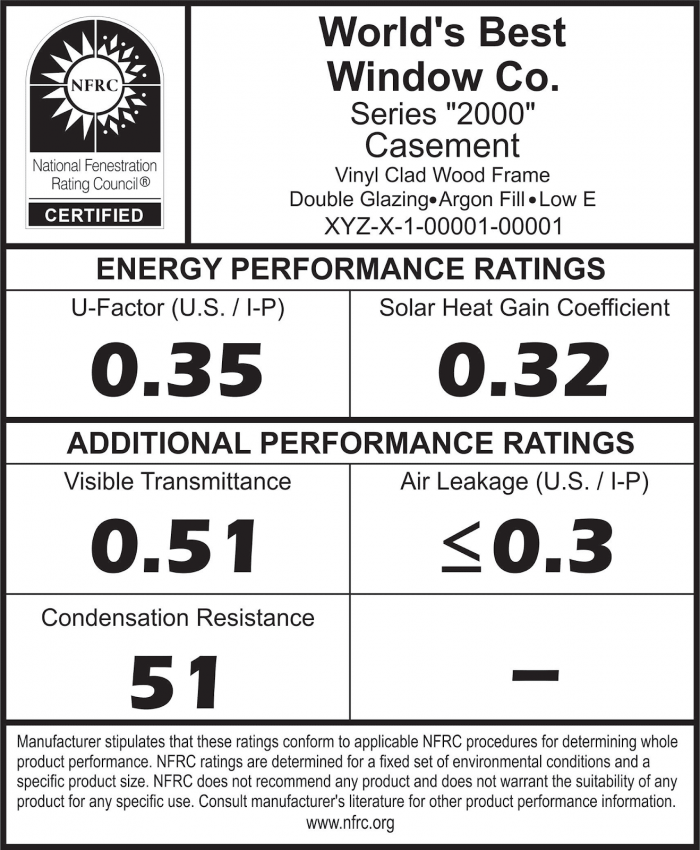
What is a Good Window U-Factor?
The lower the U-factor, the better the window is at preventing heat loss. The NRFC range is between 0.20-1.20. For climates where cold weather is a factor, installing window units with a U-factor between 0.20 and 0.40 is a major benefit when it comes to improving the energy efficiency of your home.
If you’d like information on our NFRC energy ratings, visit their directory and search “CTW”.
U-Factor and Insulation
U-factor is an excellent indicator of how well your windows and doors insulate your home. Rather than just assess the window’s glass (or glazing), the NFRC takes the performance of the entire unit into account when gauging window U-factor. This means the frame, the glass, and the spacing materials. A low U-factor suggests that all parts of the window unit are working in tandem to keep your home well insulated.
The Difference Between U-Factor and R-Value
If you are undertaking a home renovation, you may have come across the term R-Value. And while R-Value and U-Factor both deal with heat and insulation, they are notably different from each other.
R-Value:
- Measures how well different building materials resist heat the flow of heat
- The higher the number, the better the material’s thermal resistance
- Commonly used to gauge the insulating properties of wall and flooring materials
U-Factor:
- Measures the rate of heat flow or heat loss through a window unit
- The lower the number, the less heat loss occurs through the window unit
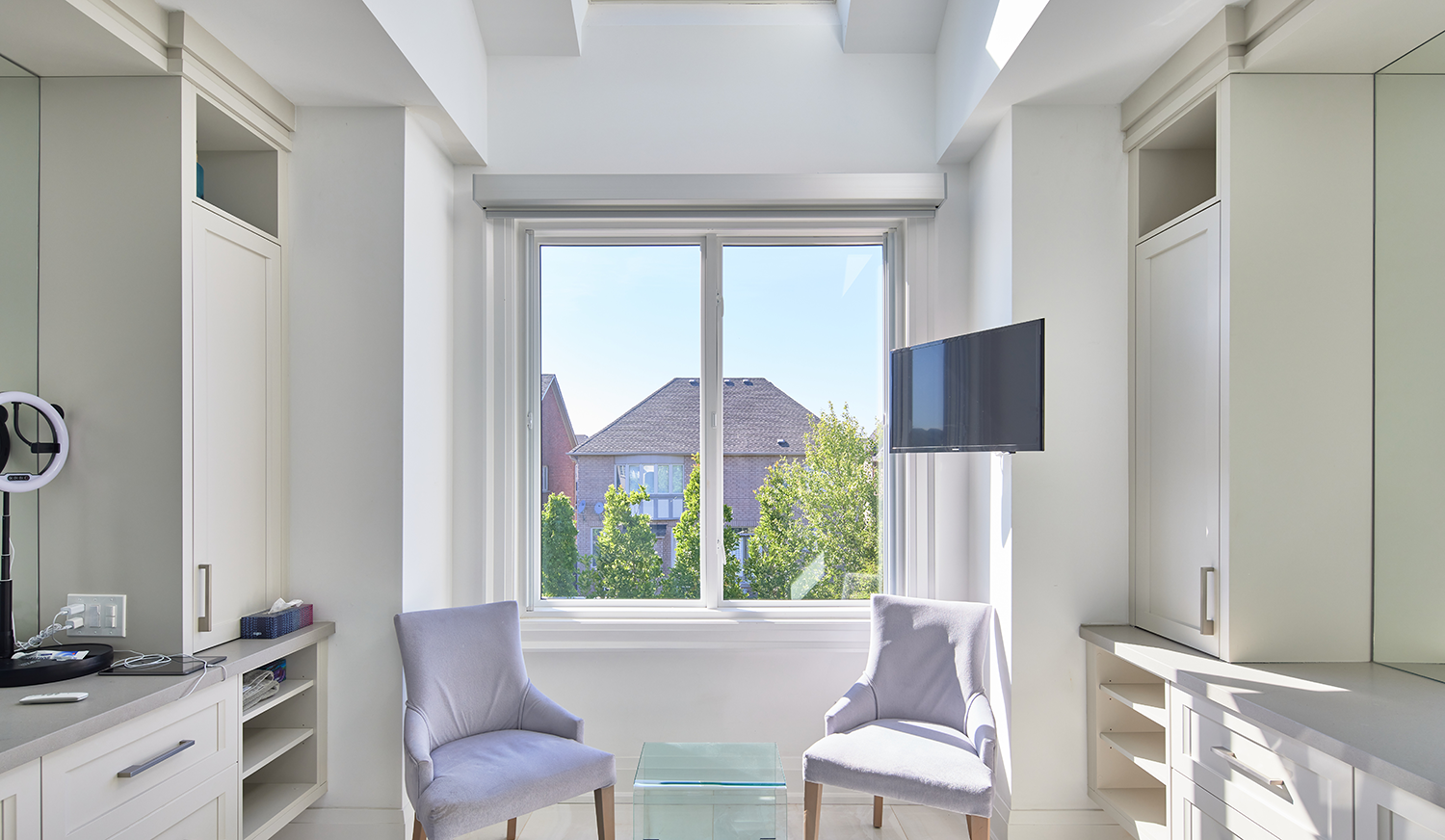
5 Window Design Elements Can Help Improve U-Factor
The NFRC takes the performance of the entire window unit into account when calculating the U-factor. Therefore, it’s important to understand what window design elements can reduce heat loss. If you’re in the market for new replacement windows, keep these design elements in mind so you can ask the right questions during the purchasing process!
1. Vinyl Window Frames
Vinyl is a very energy-efficient material due to its low thermal conductivity. This means that heat and cold have a very difficult time penetrating and moving through the material. The advantages here are clear: the more thermally efficient your window frame, the more effective the window will be at insulating your home. What’s more, vinyl frames come with welded corners which help to create a watertight seal. Unfortunately there are still several drawbacks to using vinyl frames.
The Magic™ Difference: Vinyl’s low thermal conductivity aside, it’s also very susceptible to wear and tear as well as expansion and contraction in the heat of Canadian summers and the bitter cold of the winters. To counteract this, we reinforce our vinyl frames with anodized aluminum and galvanized steel. That way, you get strength, durability, and efficiency in equal measure.
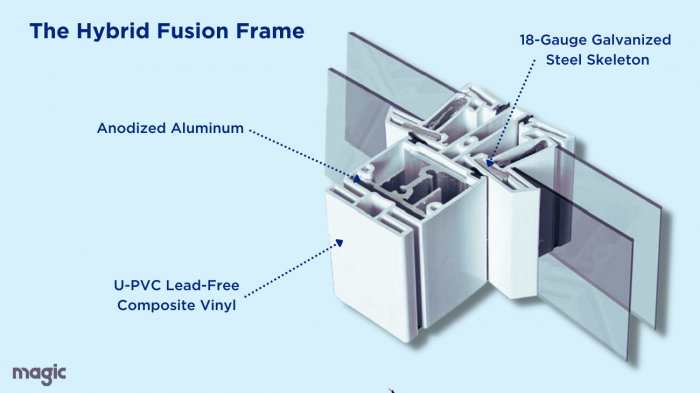
2. Gas Fills
Gas fills are an essential step in creating an insulated glass unit and lowering window U-factor. Manufacturers fill the space between the glass panes (called glazings) with krypton, argon, or xenon gas. These heavier, noble gasses are preferable to filling the unit with air because they can better impede the transfer of heat through a window.
Most IGUs on the market are separated by ½ – ¾ of an inch. Due to our innovative approach to window hardware design, we are able to extend that space to a full inch. This means we can fill our IGUs with 25%-50% more gas. More gas leads to more effective insulation when you really need it.
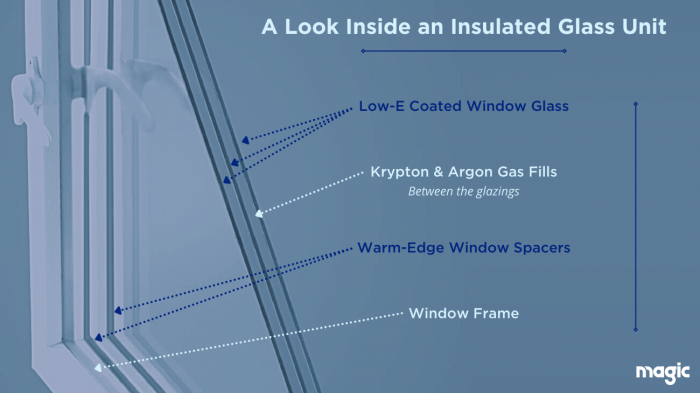
3. Low-E Coatings
Low-E coatings are transparent, very thin, slightly tinted coatings added to the glazings of a window unit. They help to control or regulate the passage of solar radiation through the window’s glass. When it comes to controlling heat, low-E helps to reflect the following types of radiation:
- Shortwave Infrared Radiation: Heat that streams through a window directly from the sun.
- Longwave Infrared Radiation: Heat absorbed and emitted from other objects, such as objects inside the home
It’s essential to customize low-E coatings so that they suit the home’s climate, geographical location, and construction. Generally speaking, there are two types of low-E coatings: solar control low-E actively reflects solar heat on exterior-facing panes, and passive low-E reflects heat back indoors on interior-facing panes.
If you think of a standard double-glazed window (a window unit containing two panes of glass), there are four glass surfaces:
- #1: The outside-facing surface of the exterior pane
- #2: The inside-facing surface of the exterior pane
- #3: The outside-facing surface of the interior pane
- #4: The inside-facing surface of the interior pane
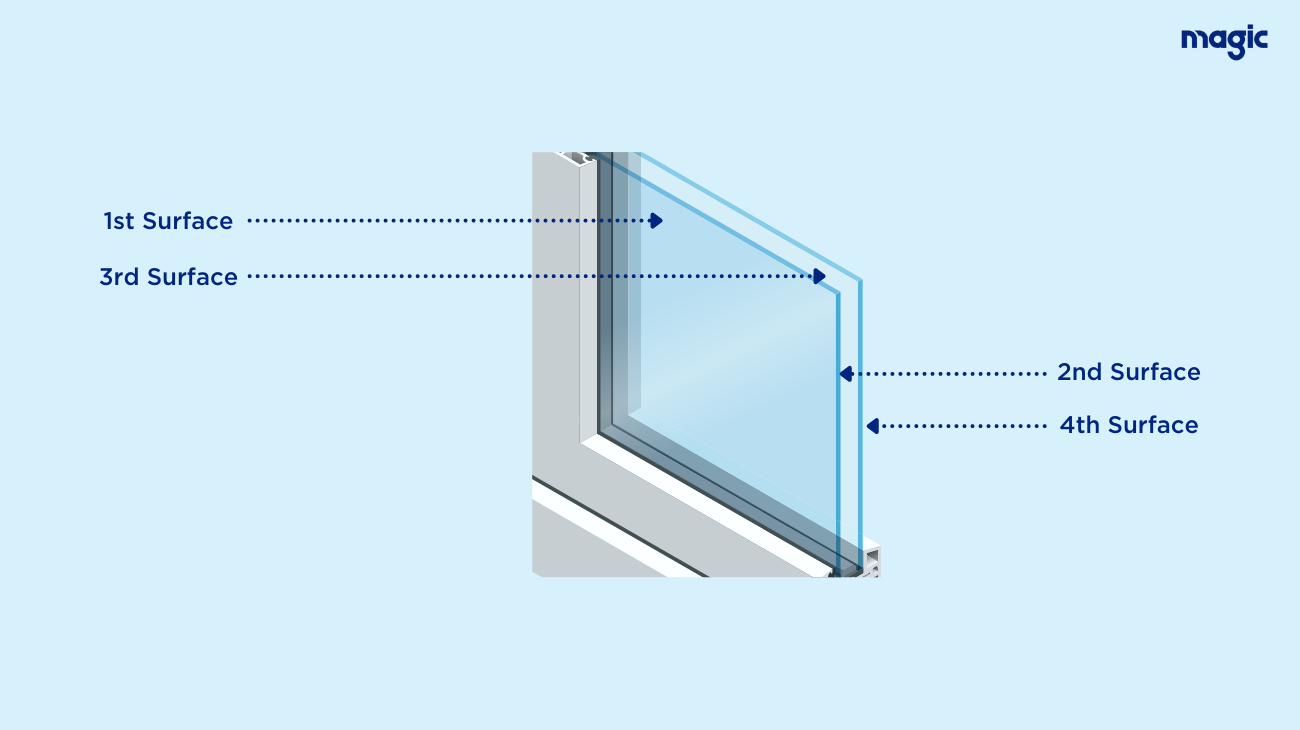
Windows that have Passive low-E coatings added on the 3rd and 4th surfaces (the ones closer to the interior of the home) can improve U-Factor:
- It helps homes contain heat by reflecting long and shortwave infrared radiation (or heat) back into the home.
- In colder climates, passive low-E allows homeowners to take full advantage of solar heat gain and relieve the burden placed on artificial heat sources.
Learn More About Low-E Coatings Here >>
4. Warm Edge Spacers
Warm edge spacers are a crucial component of an insulated glass unit (IGU). They insulate the edges of the window unit and keep the glass panes firmly apart from each other. The term “warm-edge” refers to their malleability: they expand and contract with the movement of the IGU to prevent any gas from escaping. This airtight seal also protects against heat loss, air leakage, and condensation forming inside the panes. They are a key line of defense and allow window units to stay airtight, insulated, and energy-efficient over the long term.
5. Thermal Blackout Blinds
A built-in thermal blackout blind can significantly improve a window’s insulating capabilities, effectively making it up to 40% more energy efficient than an equivalent unit. During the winter months, these blinds can reduce utility bills and prevent heat loss by preventing comfortably heated air from escaping outside.
The Magic™ Difference: Our built-in, fully retractable insect screens, solar shades, and blackout blinds give you complete control over when, where, and to what extent your screens and blinds are in use. The use of all three Retractable Slide ‘N’ Hide® screens can lead to significant improvements in your ability to control natural light and heat.
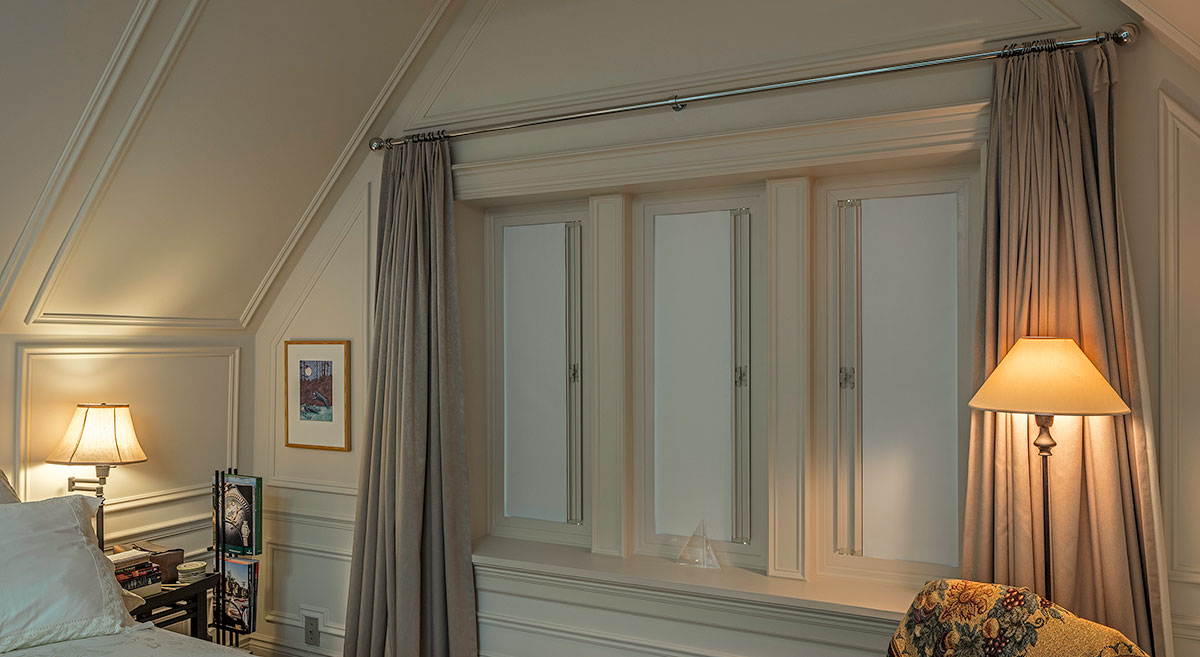
Want to Learn More About Installing High-Performance Windows?
While performance features like window U-Factor and third-party metrics matter, what matters most is that your windows perform exactly how your home needs them to. That’s why we formulate our own glass units to meet specific solar and energy-control needs of different regions and climates. It also allows us to maximize your windows’ performance in accordance with your specific preferences, climate, and home’s construction.
Looking for more information on U-Factor or general information about replacing your windows? Reach out today to book a free, no-hassle consultation with one of our representatives!

